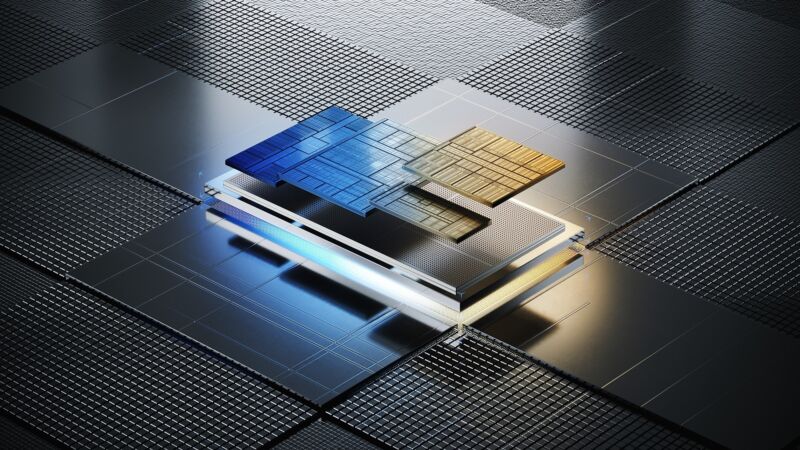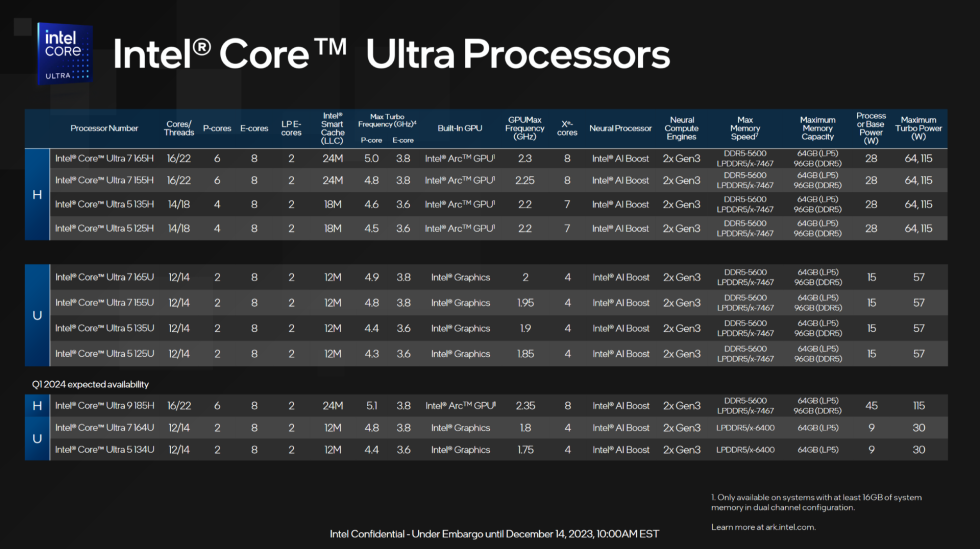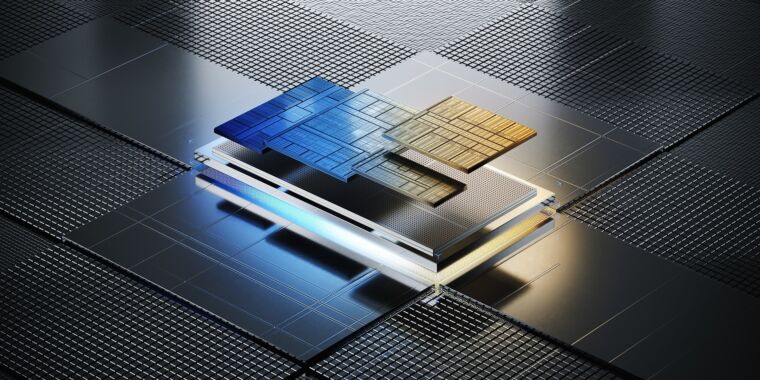
Intel
Intel announced technical details about its next-generation Core CPUs a few months ago. Codenamed Meteor Lake, the chips are good and bad news for Intel’s chip manufacturing ambitions—they’re simultaneously the first chips to use the new Intel 4 process and the first of Intel’s mass-market consumer processors to use silicon manufactured by someone other than Intel (in this case, TSMC). They’re also a showcase for Intel’s Foveros packaging technology, which welds several pieces of silicon (“tiles,” in Intel’s words) rather than integrating everything into a single monolithic die.
Today, Intel is announcing the first wave of actual Meteor Lake processors, which Intel says will be available in some PCs starting today—expect to see quite a few of these PC designs announced this week and even more at CES next month.
The lineup includes 11 chips across two different product families: H-series processors for thin-and-light workstation and gaming laptops and U-series chips that will end up in Ultrabooks. Eight of these are launching today, and three more are expected in Q1 of 2024. The two families share many similarities, including Intel’s first built-in neural processing unit (NPU) for accelerating machine learning and AI workloads, but in short, the H-series chips use more power and include more P-cores and GPU cores.

Intel
The slide above has all the key specs, but at a high level: the H-series chips include either six or four Redwood Cove P-cores, eight Crestmont E-cores, and two Crestmont LP E-cores. (Meteor Lake includes a pair of even lower-power E-cores in its SoC tile, allowing the main CPU tile to be shut off entirely when CPU usage is low.) They also include Intel Arc-branded, TSMC-manufactured GPU tiles with either eight or seven Xe cores, base CPU power limits of 28 W, and maximum Turbo Boost power limits of either 64 or 115 W (likely depending on the specific laptop you buy).
The U-series chips are cut back considerably to fit inside a lower power budget. They all include just two P-cores plus eight E-cores and two LP E-cores, and integrated GPUs with only four Xe cores; the Arc branding has been dropped for these despite their use of the same GPU architecture, something Intel was already doing with the Iris GPU branding in previous generations. Their base power limit is 15 W, and their turbo power limit is 57 W, though the two additional models coming in early 2024 have lower base and Turbo limits of 9 W and 30 W, respectively.
None of the chips announced today use the top-tier Core Ultra 9 branding, but the Core Ultra 9 185H will launch early next year with a marginally increased 5.1 GHz peak clock speed, higher base and turbo power usage, and most of the same basic specs as the Core Ultra 7 165H. Intel has announced non-Ultra Core 7, Core 5, and Core 3 branding for slower and cheaper CPUs, but none of these are being announced today.
-
Core Ultra’s platform features.
Intel -
The Arc-branded GPU includes most of the same features as desktop Arc cards, including AV1 video encoding.
Intel

